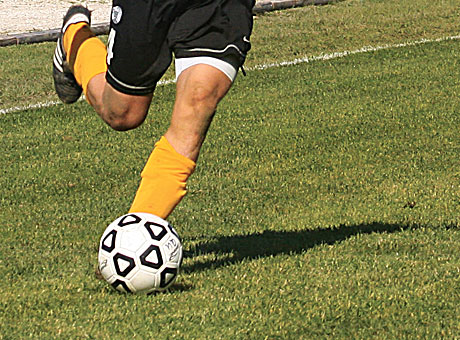
Although mostly a sports injury, ACL tears — often caused by pivoting or landing from a jump — can also occur during rough play, motor vehicle collisions, falls and work-related injuries. DEPARTMENT OF ORTHOPAEDIC SURGERY

Although mostly a sports injury, ACL tears — often caused by pivoting or landing from a jump — can also occur during rough play, motor vehicle collisions, falls and work-related injuries. DEPARTMENT OF ORTHOPAEDIC SURGERY
Sports medicine specialists at the School of Medicine are leading a national study analyzing why a second surgery to reconstruct a tear in the knee’s anterior cruciate ligament (ACL) carries a high risk of bad outcome.
More than 200,000 ACL reconstructions are performed each year in the United States, and 1 percent to 8 percent fail for some reason. Most patients then opt to have their knee ligament reconstructed a second time, but the failure rate on subsequent surgeries is nearly 14 percent.
The Washington University group received a $2.6 million grant from the National Institute of Arthritis and Musculoskeletal and Skin Diseases and is leading dozens of surgeons across the nation in one of the largest orthopedic, multicenter studies ever conducted: the MARS study (Multicenter ACL Revision Study).
“If I reconstruct the ACL in your knee, and you go back to sports, and three years later you pivot on a basketball court and tear it again, that subsequent surgery often does not have results equal to the original surgery,” says Rick W. Wright, MD, the Dr. Asa C. and Mrs. Dorothy W. Jones Professor in Orthopaedic Surgery and the MARS study’s principal investigator.
During ACL reconstruction, surgeons sometimes replace the torn knee ligament with a ligament transplanted from a cadaver. In other cases, the surgeon will move a piece of the hamstring muscle or the patellar tendon and attach it in place of the torn ligament.
Wright, who also is co-chief of Washington University’s Sports Medicine Service and an orthopedic surgeon at Barnes-Jewish Hospital, and his colleagues are recruiting patients with a second ACL tear for the MARS study. The surgeons will note the condition of the knee and how the original surgery was performed to see whether that predicts problems with a subsequent operation. They also will make note of the surgical technique and source of the ACL graft used in the initial reconstruction.
The surgeons will compare rehabilitation techniques and whether particular approaches are related to better or worse outcomes. Patients will be surveyed about their knee function, the general state of their health, and their quality of life before and after a second ACL surgery